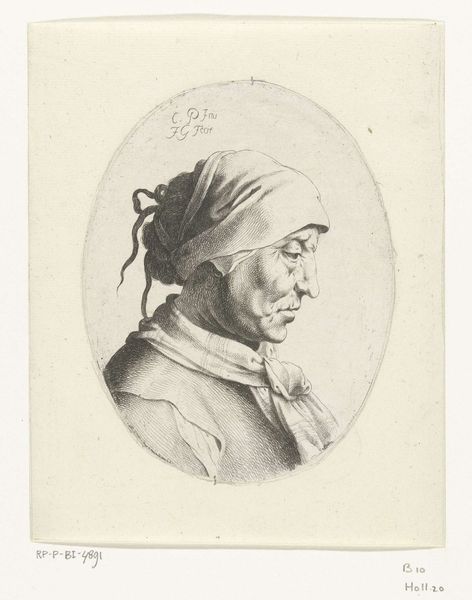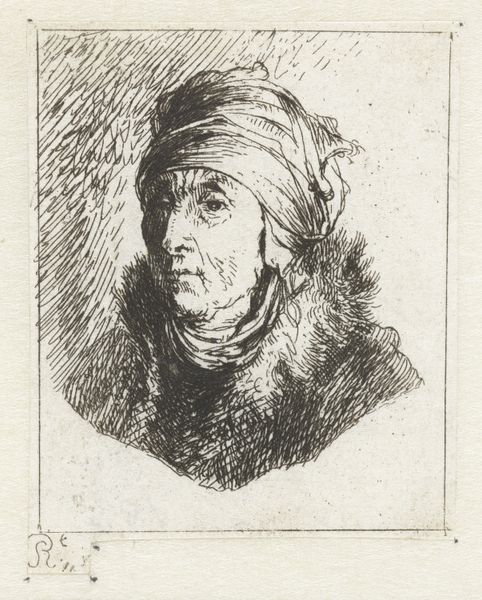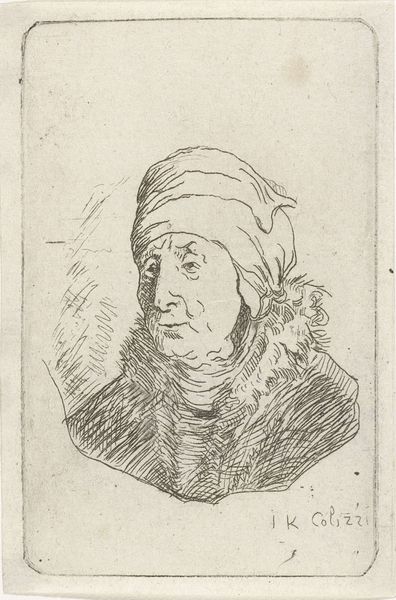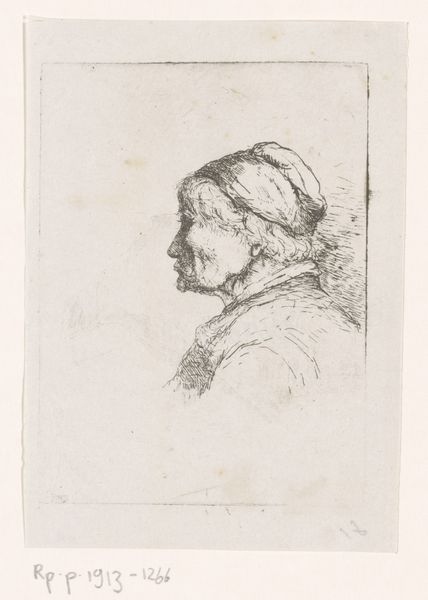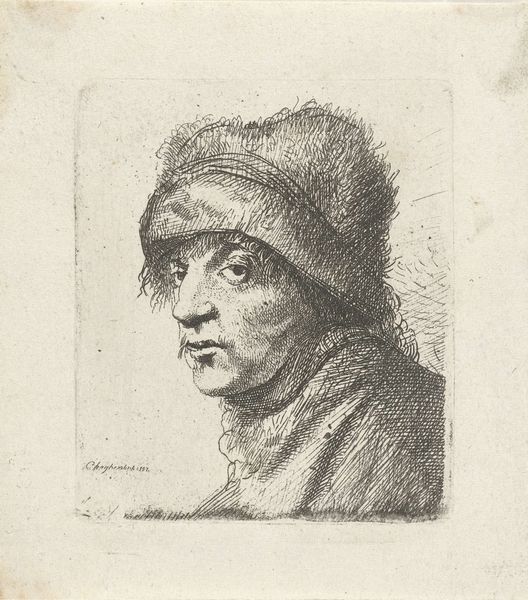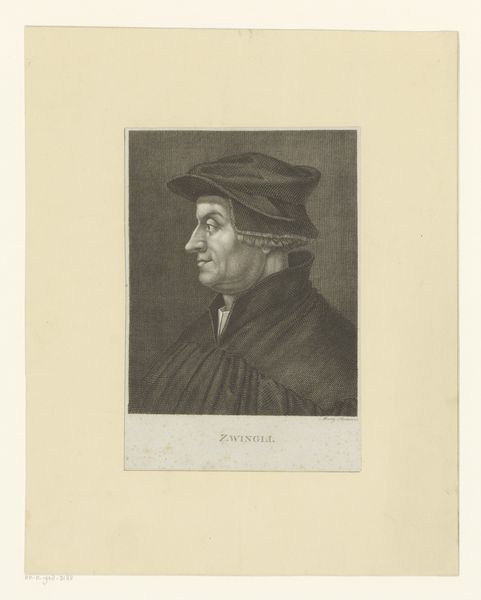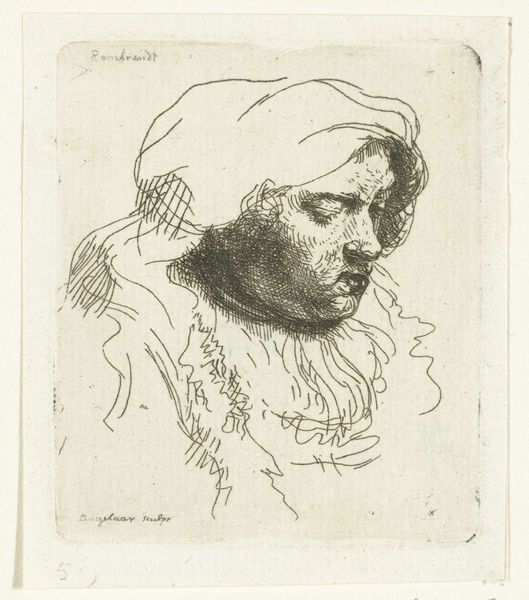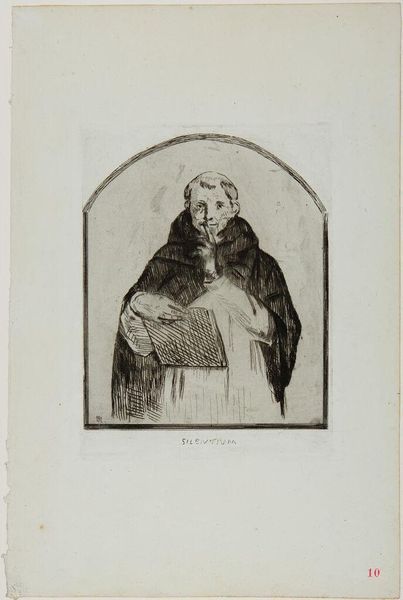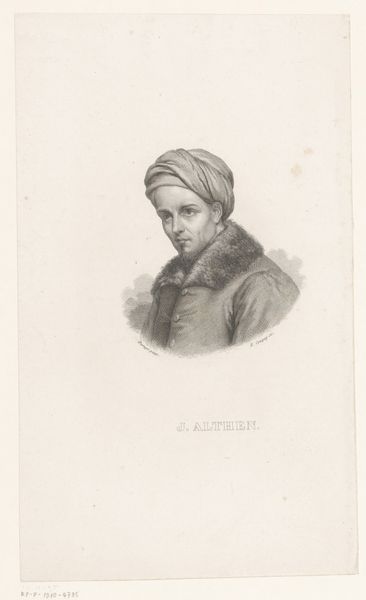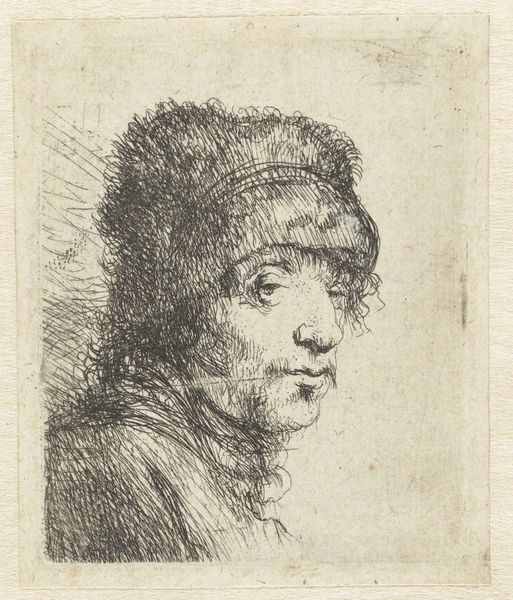
drawing, pencil
#
portrait
#
drawing
#
caricature
#
caricature
#
pencil drawing
#
romanticism
#
pencil
#
portrait drawing
Dimensions: height 209 mm, width 184 mm
Copyright: Rijks Museum: Open Domain
Curator: Here we have "Vrouw met muts," or "Woman with a Bonnet," a pencil drawing made around 1819 by Jacobus Adrianus Weiland. Editor: Immediately, I'm struck by its stark simplicity. It's all delicate lines and the interplay of light and shadow; despite that frilled collar and bonnet, she almost seems austere. Curator: Weiland clearly has an interest in caricature, even in this seemingly straightforward portrait. Notice how he exaggerates certain features. The drawing, as a commodity, served multiple purposes in society. This method democratized representation, moving away from more formal portraiture styles reserved for the elite. Editor: The bonnet itself is an interesting symbol, isn’t it? Throughout art history, head coverings often represent modesty or a certain social standing. Here, though, combined with her knowing expression, it gives a sense of hidden depths. Do you feel that plays a role in the woman's individual agency in the piece? Curator: Precisely, in contrast with grand oil paintings made for aristocrats and wealthy merchants, consider that this pencil drawing can be relatively easily reproduced and consumed, speaking to Weiland’s conscious choice of readily available and relatively inexpensive material and the social stratum this kind of portraiture catered to. Editor: And, the somewhat downwards glance suggests pensiveness. Her focus is internal, she exists almost entirely self-contained in the borders of the artwork. How interesting, then, that the texture of the work brings to mind graphite pencils readily found at most markets. It is so incredibly tactile! It encourages you to trace your fingers across it as if you could feel the slight furrows left by Weiland’s pencils. Curator: Good observation, there! This brings to question how the ready accessibility of these kinds of drawings facilitated cultural exchange and circulation of images. The texture gives it this very palpable effect of material accessibility that makes it stand apart from images designed for those of noble class. Editor: It feels like peering into a fleeting moment, captured with surprising intimacy. This brief survey of materials and symbolism gives a whole new perspective. Curator: Absolutely. The more we investigate Weiland’s production, the clearer its relationship to burgeoning ideas around access and cultural expression becomes.
Comments
No comments
Be the first to comment and join the conversation on the ultimate creative platform.
